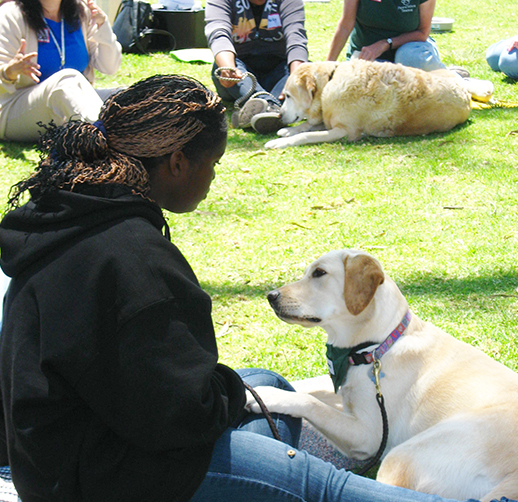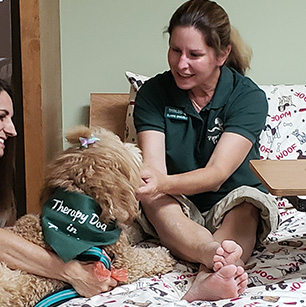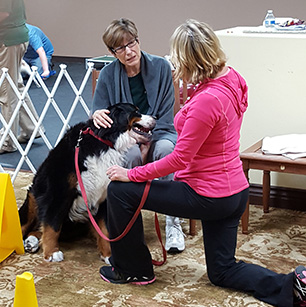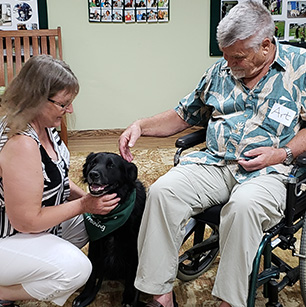RESUME OF A
THERAPY DOG
Therapy dogs come in all sizes, shapes, breeds, ages, and gender. Knowing this, how do you determine the qualities needed for a successful career as a therapy dog? After all, each person visited will have different preferences. One person may be frightened of large dogs but quickly reach for that tiny Pomeranian. Another person may find a huge lug of a dog much easier to hug. A hyper-active child will need a very calm dog that he can lie next to on the floor. Even the geriatric dog can find a place in therapy work. After all, some senior citizens will certainly be able to identify better with a slow-moving, gray-muzzled, slightly arthritic dog. And, just think what the courage exhibited by a three-legged dog can teach a paraplegic or someone struggling with a terminal illness. The major ingredients for these situations are personality and temperament. Every therapy dog must be even-tempered, good-natured, and able to accept handling by strangers.
Therapy Dogs In Training

Most therapy dogs are personal pets who accompany their owners to a variety of facilities such as skilled nursing homes or hospitals. Many therapy dog visits require very simple skills from the dog. The dog doesn’t have to know a lot of commands or even perform tricks. A dog that lies quietly on a bed beside a patient can lower that person’s blood pressure and reduce the sensation of pain. In some settings, soft warm eyes gazing up at a person are all it takes to work magic. Volunteering with your dog can be a family project too!



